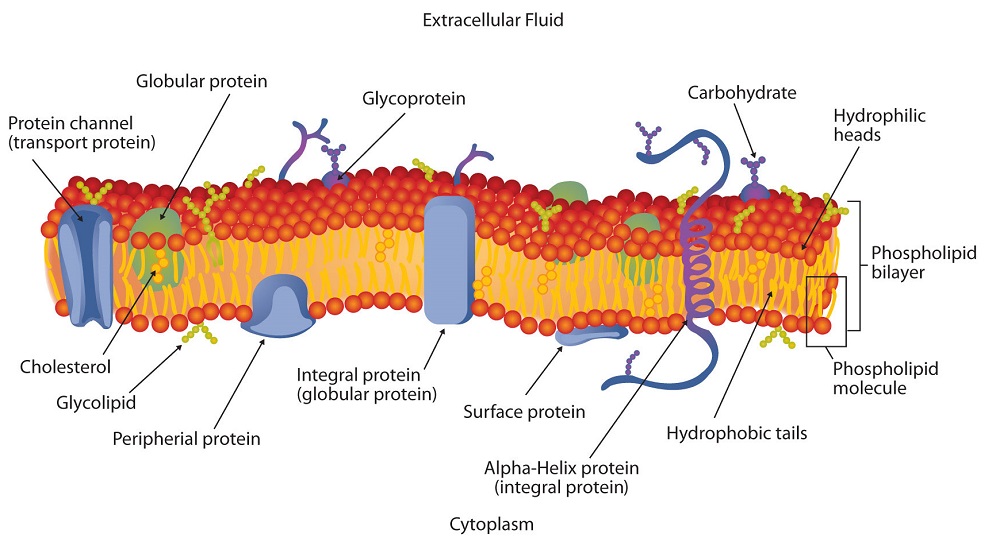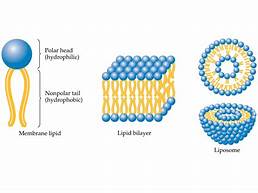Chapter 10: Membrane Structure
CELL MEMBRANE:
Cell Membranes are the outermost layer in animals whereas in plants the second most layer after the cell wall.
It is the universal structure and structural cell membrane of prokaryotes that are similar to eukaryotes.
It encloses the boundaries and all the cellular interactions between cytosol and the external environment.
Cell Membranes are dynamic, fluid structures comprising lipid bilayers and protein molecules embedded in them.
They are held together by non-covalent interactions.

LIPID BILAYER:
The lipid bilayer comprises phosphoglycerides, sphingolipids, and sterols in the cell membrane.
All lipid molecules have a hydrophilic head and two hydrophobic tails. This makes nature to be amphillic.
Lipids are the main component of the cell membrane because it forms the continuous structural frame of the cell membrane.
The phospholipid layer provides fluidity to the plasma membrane because phospholipids are rich in unsaturated fatty acids.
The main phospholipids in most animal cell membranes are phosphoglycerides.
Glycolipids and cholesterol are also part of the lipid bilayer.
The reason behind the formation of the bilayers is their shape and amphiphilic nature.
The lipid bilayer is a two-dimensional fluid.
Liposomes (spherical vesicles) provide fluidity to the lipid bilayer.
When the lipid molecules in the plasma membrane of living cells segregate in their specialized domains called lipid rafts.
The excess lipids often get stored as fat droplets and these are often termed to be adipocytes.
As the lipid bilayer is known to be asymmetrical which is functionally very important when it comes to converting extracellular signals into intracellular ones.

MEMBRANE PROTEINS:
Membrane proteins are responsible for performing most of the membrane’s specific tasks.
“A typical plasma membrane is somewhere in between, with protein accounting for about half of its mass”.
Membrane proteins are amphiphilic having both hydrophobic and hydrophilic regions.
Many of the membrane proteins also extend through the lipid bilayer called transmembrane proteins.
Other membrane proteins are located entirely in the cytosol.
There are membrane-associated proteins that do not extend into the hydrophobic interior of the lipid bilayer at all. These sorts of proteins are often referred to as peripheral membrane proteins.
Only transmembrane proteins can function on both sides of the bilayer or transport the molecules across it.
There are two types of protein that are present in the plasma membrane.
CARBOHYDRATES:
Oligostructures of the glycolipids and glycoproteins on the outer surface of the plasma membrane are involved in cell to cell recognization mechanism.